Self-propelled nuclear reactors - ideas never die
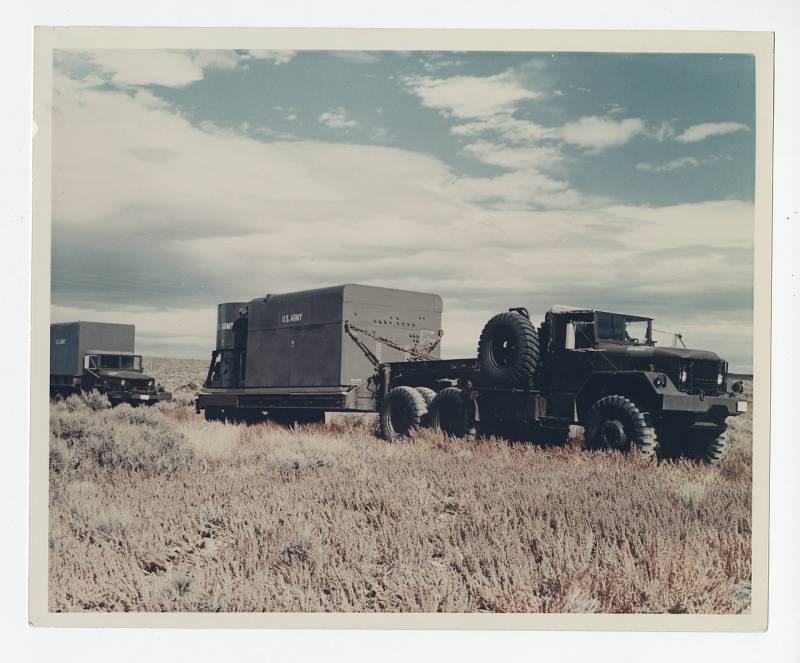
NPP on wheels ML-1 Mobile Power System. Source: wikipedia.org
United States experience
The idea of having a small-sized nuclear reactor at hand is good from all sides. Such a unit requires fuel supply once a year or even less often, there are no toxic emissions, there are no particular problems with organizing parallel heat supply to the facility. The versatility of a compact and, most importantly, mobile nuclear power plant will make it possible to use the equipment for civilian purposes, for example, to provide shift workers in the Far North. The high requirements for the qualifications of operators and fears of the likely consequences of an accident have become restrictions on the wide distribution of small-sized nuclear power plants. After Chernobyl and Fukushima, even stationary nuclear reactors cause fear among the public, but here it was about wheeled and tracked vehicles. Nevertheless, progress cannot be stopped, and sooner or later compact nuclear power plants will take their place both in the civilian sector and in military service. Moreover, in the middle of the last century, considerable experience has been accumulated in this area.
The main players in the global nuclear industry are traditionally Russia and the United States. Let's start with the American experience in creating small-sized nuclear reactors for military needs. Having the most extensive network of military bases in the world, the Pentagon rightly hoped for the creation of a universal source of energy that would ensure high autonomy of the facility.
The first was the ML-1 Mobile Power System, developed and tested in 1961-1965. The idea was to create a small-sized nuclear reactor that could not only provide heat and electricity to the bases, but also follow the troops. Engineers tried to build a unique reactor in which the inert nitrogen gas would be responsible for the transfer of heat from fuel rods (TVEL - fuel element). Even now it looks like a non-trivial decision, but for the 60s it seemed extremely risky.
The very idea of gas cooling of the reactor core is not new and was first implemented back in 1956 at the Calder Hall experimental nuclear power plant in the UK. The cooling agent was carbon dioxide at a pressure of 7,8 atmospheres, which heated up to 345 degrees Celsius at the exit from the core. As in any reactor of the classical scheme, the superheated gas was sent to the steam generator, where it transferred its energy to liquid water, and it, in turn, to the generator turbine. Carbon dioxide is good in a reactor up to a point. As soon as the temperature of the graphite rods approaches 500 degrees, CO2 enters into a chemical reaction with them. Therefore, it is necessary to limit both the power and the efficiency of a nuclear power plant. For the same reason, hydrogen was not used as a primary coolant - at temperatures above 700 degrees, hydrocarbons formed on the surface of graphite rods.
An expensive alternative is the noble gas helium, which allows you to accelerate the temperature of the hot zone to 1000 degrees or more. But it is very difficult to obtain and purify it from harmful impurities, such as hydrogen, carbon monoxide and carbon dioxide, which are not able to work at such temperatures. The first nuclear power plant with helium as a cooling gas appeared in the United States in 1966 at Peach Bottom.
Attempts to use nitrogen to cool the reactor core in the mobile ML-1 are understandable. In the event of a massive leak, which cannot be avoided, the primary coolant can be obtained literally from the air. To do this, it is required to include a gas liquefaction and purification plant in the kit. In the field, this is much easier to do than fiddling with carbon dioxide, helium, and even more so with hydrogen.
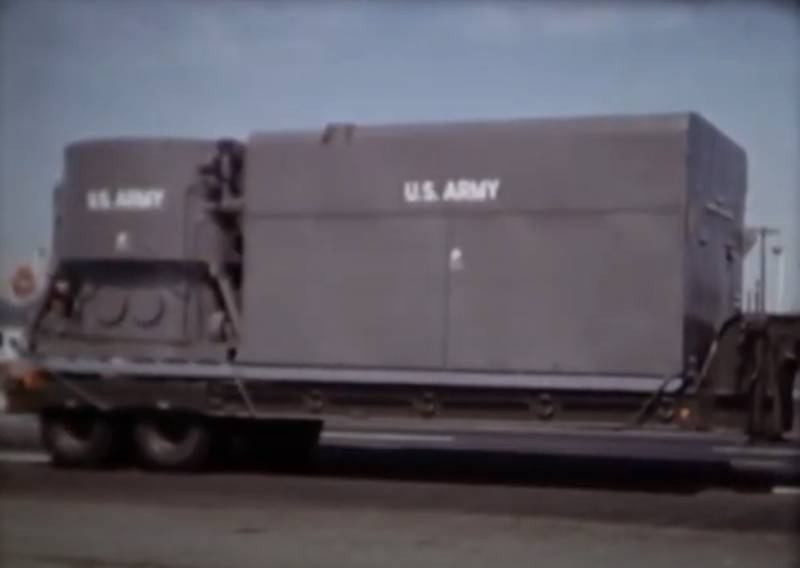
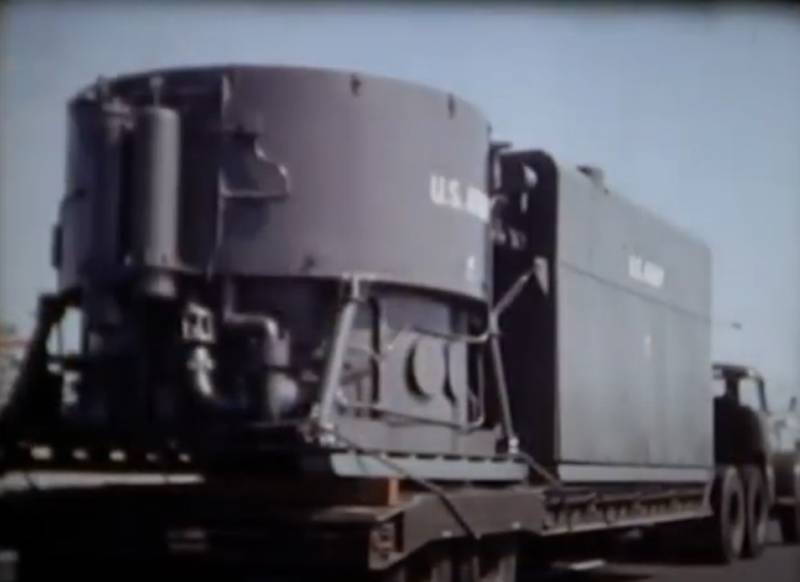
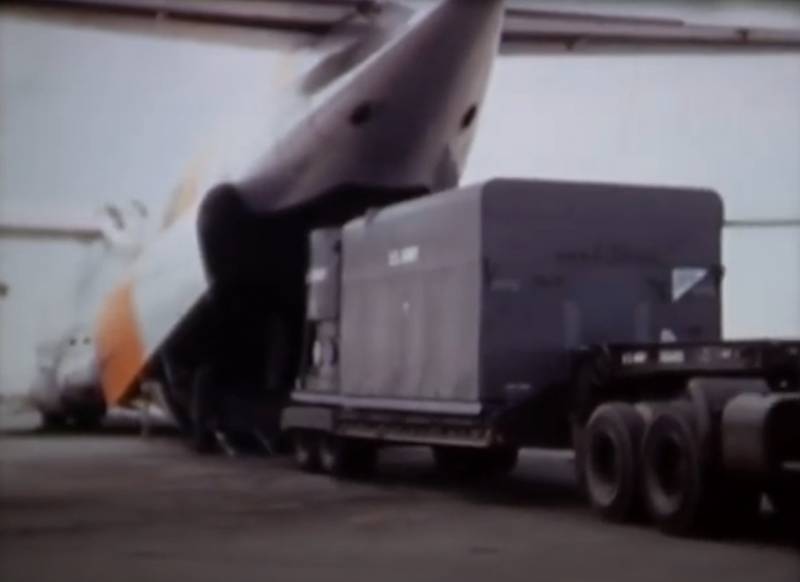
Archival footage of ML-1 testing. Source: youtube.com
But it was smooth only on paper. The ML-1's biggest problems were with nitrogen circulating through a closed system at a pressure of nine atmospheres. At the same time, at the entrance to the hot zone, the gas had a temperature of about 420-430 degrees, and at the exit it warmed up to 650. The engineers failed to ensure more or less adequate tightness of the cooling circuit. The energy recuperator installed behind the gas turbine and designed to transfer part of the unused energy of superheated steam back to the gas cooling circuit seriously complicated the design. This increased the efficiency by a couple of percent, but significantly complicated the design. And, finally, the last complication was the system of water pipes penetrating bundles of fuel elements. The water in this circuit was supplied under pressure, did not heat up above 120 degrees and played the role of a reactor neutron moderator. The entire structure was packed in four shipping containers with a total weight of 38 tons. The Americans expected to transport the ML-1 not only on trailers, but also in the hold of a military transport C-130.
For the first time, a compact AEChS worked in 1962, however, only for a few minutes. The next launch took place at the end of the winter of 1963. In total, the reactor worked for about 100 hours, but due to many defects and shortcomings, it was shut down. Welded seams of water pipes cracked, nitrogen constantly leaked from the cooling circuit under high pressure, and the maximum power did not even reach 200 kW. The calculated value was about 300 kW. After a significant revision, the ML-1 was launched again in the spring of 1964. The reactor worked very unstable, and could not reach the required power and required constant attention. But the project was closed not for this reason. By the mid-60s, the Vietnam War began to eat up most of the defense budget, and it was decided to freeze all non-priority projects. The Atomic Energy Commission, during the hearings, allocated funding only for the completion of work and the conservation of the program. It is likely that with adequate funding, the Americans would have brought the project to mind - it is possible that with a complete restructuring of the concept.
Experience of the Soviet Union
Unlike the Americans, the first domestic self-propelled nuclear reactor turned out to be much more successful. It bears the name of TES-1 and is the world's first mobile nuclear power plant. The complex did not pull at all for the role of an air transport, and there was no such task. TPP-1 was created to supply power to remote civilian settlements and military facilities. It was assumed that the four tracked platforms of the complex would be delivered by rail, and they would reach the place of deployment on their own. The idea of creating a mobile nuclear reactor was born in 1957 within the walls of the Obninsk Institute of Physics and Power Engineering, which at that time bore the encrypted name "Laboratory V". In total, at least sixteen specialized structures were connected to the project, starting from the Research Institute of the Ministry of Defense and ending with a carriage building plant. As mentioned above, the Soviet project was not so seriously limited by weight characteristics and, therefore, was deprived of risky innovations. As the heart of the nuclear power plant, they chose a pressurized water reactor tested at that time, in which deeply purified water cools the fuel elements, and at the output transfers energy through a heat exchanger to a circuit with a turbine and a generator. The water pressure in the cooling circuit was 130 atmospheres, and this made it possible to keep the flow in a liquid state even at 300 degrees Celsius. At the same time, the pressure in the steam generator did not exceed 20 atmospheres, and the superheated steam went to the turbine with a temperature of 280 degrees.
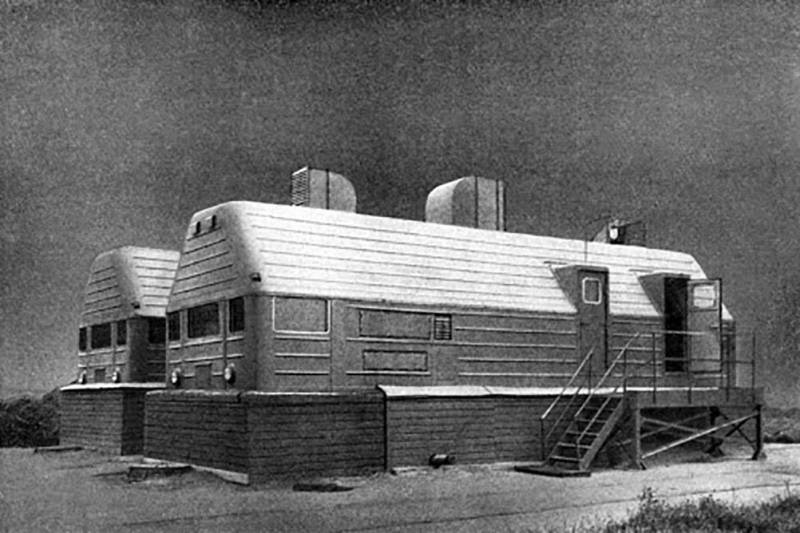
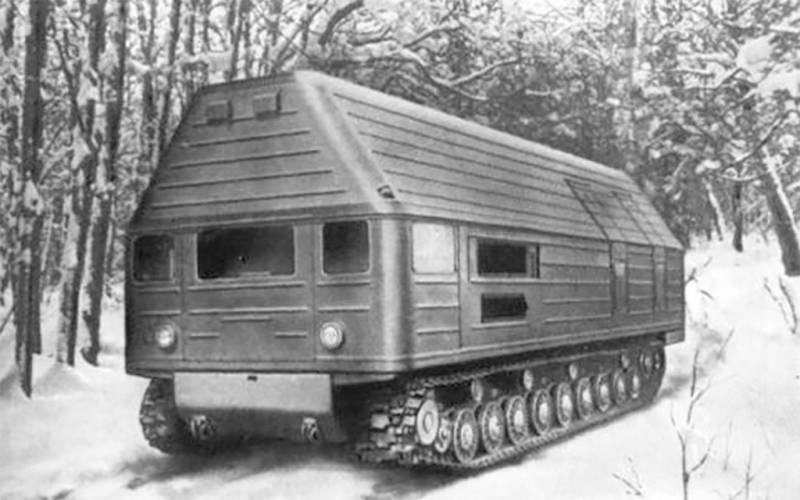
The top photo shows the working position of the TES-3 tracked platforms with a turbogenerator and a control module
The design turned out to be cumbersome and was placed on four elongated chassis of a heavy tank T-10 - the number of road wheels on each side has been increased from 7 to 10. The reactor is on one chassis, the steam generator is on the second, the turbine with the generator is on the third, the control center is on the fourth. The total weight of the self-propelled nuclear power plant was 310 tons. A significant contribution to this severity was made by the built-in biological protection - a lead tank 100-190 mm thick, which was filled with a solution of boric acid by the beginning of work. In the deployed state, the operation of the complex was controlled by a shift of three people. For the safe operation of TPP-3, it was impossible to simply fit four self-propelled vehicles to the facility, start the reactor and connect to the network. An important requirement was the construction of an earthen rampart or a kind of caponier around platforms with a reactor and a steam generator. Of course, the reactor operated only in the deployed position, when all four machines were connected by pipelines and power cables. But what to do when you need to change the place of deployment, and the fuel assemblies have not cooled down yet? The water cooling jacket could not work due to the shutdown of the steam generator in the stowed position. To do this, an air cooler was provided on the first conveyor, dissipating residual heat from the cooling reactor. The change of spent fuel assemblies was supposed to be carried out in the field using a 25-ton crane.
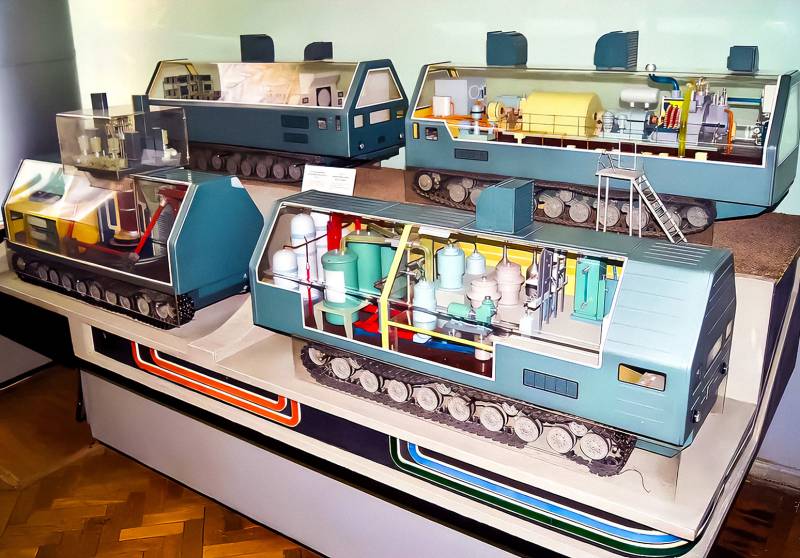
Model of TPP-3. Source: comfortdrive.ru
Trial operation of TPP-3 on the territory of the world's first stationary nuclear power plant in Obninsk lasted from 1961 to 1965 and did not cause any fundamental complaints. The machine confidently reached the maximum design power of 1500 kW, and the work on one fuel assembly was 250 days.
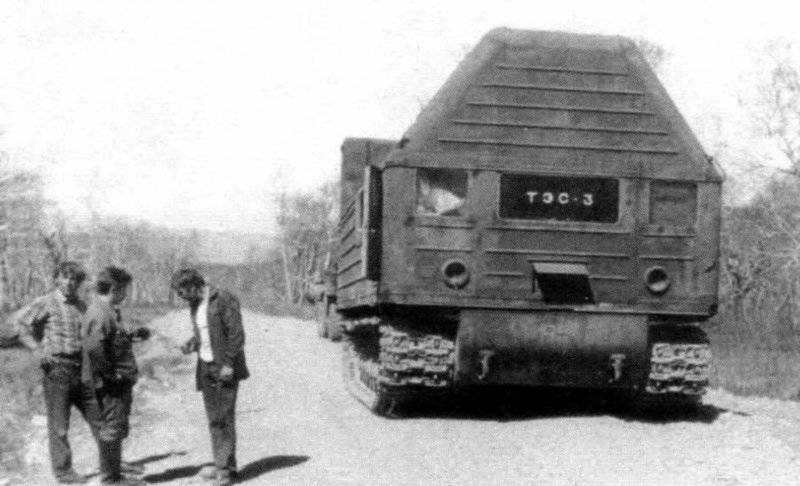
A platform with a turbogenerator was tested in Kamchatka in the 80s. The remaining three TES-3 machines remained in Obninsk
In 1964, in the industry magazine "Atomic Energy", the preliminary results of the pilot operation of a mobile reactor were summed up:
Information